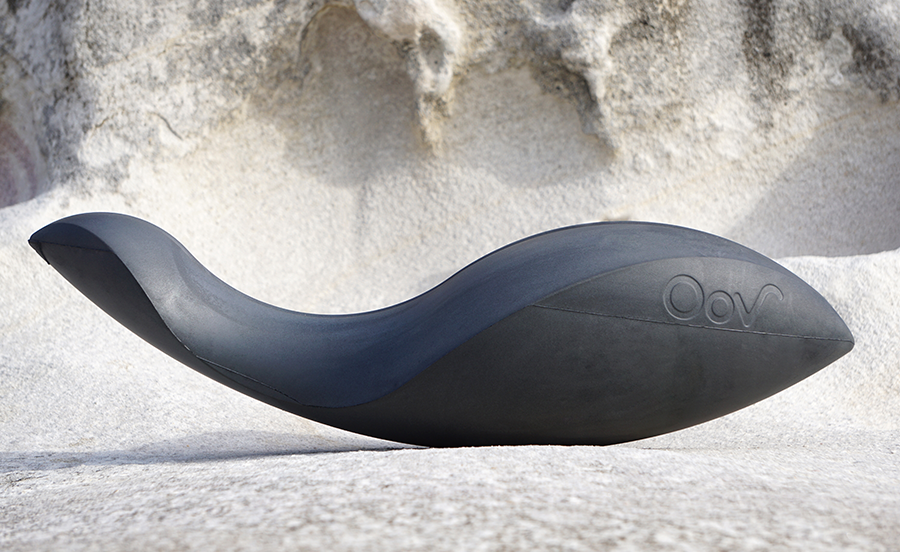Recently, my friend, Loribeth Cohen, said to me, “Denise, you have to try the OOV. You will love it and so will your patients.” Loribeth is a fellow PT and IMT therapist, a pilates and Ayurvedic practitioner, and owner of re:fit in Glenview.
Somewhat reluctantly, I agreed and showed up to her two-day OOV class last September and quickly realized she was right! Before I knew it, I went to two more classes, including a class with OOV creator, Australian Daniel Vladeta.
I have many tools to help my patients learn how to use their bodies, but sometimes things still don’t quite click. The OOV felt like the missing link my patients needed to really get their bodies working optimally.
So, what the heck is an OOV?
I still have no idea why it’s called an OOV. It’s an unusual looking device that works as a biofeedback tool to subconsciously teach your body how to stabilize and function optimally. The crescent shaped bottom creates three-dimensional instability while the S-shaped top follows the natural curves of the spine.
You can use the OOV in many different ways:
- Lying on your back, stomach or side
- Sitting
- Standing
- In a crawling position with one knee on the neck
Benefits of using the OOV
No matter what position you use the OOV, it prevents your body from compensating by allowing you to activate your core appropriately. This improves your ability to move and stabilize.
Here are some real life examples:
- I’ve always had difficulty activating my left glute while running. On the OOV, I can feel my left glute and core activating in a way no other exercise could do. I actually now feel my left glute while running!
- Hallie was having difficulty stabilizing on her right leg while using the TRX. She did some OOV exercises for 10 minutes, then returned to the TRX. She was able to stand solidly on her right leg to perform challenging balance exercises.
- Stacy was having difficulty learning how to diaphragm breath without overusing her neck muscles. After a few OOV sessions, she can now consistently diaphragm breath without pulling in her neck muscles.
- Amy, once a collegiate dancer, felt her body work together better than it has in a long time.
- Dean has very stiff feet and ankles from an auto-immune condition making it difficult to climb stairs. After using the OOV in various standing exercises, his feet and ankles are now more mobile and climbing stairs is easier.
Check out this video to see the different ways you can use the OOV.
Other benefits of the OOV
- Promotes relaxation by settling your body’s fight or flight mechanism known as the sympathetic nervous system
- Promotes optimal diaphragmatic breathing
- Promotes integration of arm and leg movements with your core
- Promotes myofascial release of the fascial envelope that surrounds every organ and muscle in your body
Interested in trying the OOV? Give us a call to set up a “taster” OOV session. >>Click here to learn more.








Leave a Reply